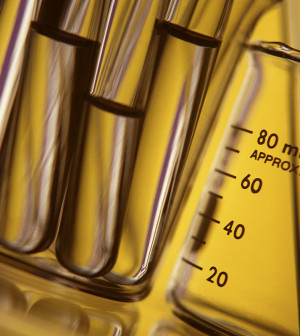- Skip Storing This Everyday Product in the Fridge Door
- Green Tea + B3 Pairing May Boost Brain Health
- Navigating Your Midlife Crisis: Embracing New Possibilities
- City Raccoons Showing Signs of Domestication
- Mapping the Exposome: Science Broadens Focus to Environmental Disease Triggers
- One Week Less on Social Media Linked to Better Mental Health
- Your Brain Changes in Stages as You Age, Study Finds
- Some Suicide Victims Show No Typical Warning Signs, Study Finds
- ByHeart Formula Faces Lawsuits After Babies Sickened With Botulism
- Switch to Vegan Diet Could Cut Your Greenhouse Gas Emissions in Half
Study: Trained Experts Can Spot Breast Cancer in ‘Blink of an Eye’

Trained radiologists can identify abnormal mammograms in a half-second, a new study says.
The experiments by American and British researchers confirm anecdotes about experienced radiologists’ ability to quickly determine when a breast X-ray is suspicious.
While radiologists would never spend only a half-second to assess a real mammogram, these results suggest there are detectable signs of breast cancer that radiologists notice immediately, the study authors said.
“Radiologists can have ‘hunches’ after a first look at a mammogram. We found that these hunches are based on something real in the images,” study senior author Jeremy Wolfe said. “It’s really striking that in the blink of an eye, an expert can pick up on something about that mammogram that indicates abnormality.”
Wolfe heads the Visual Attention Laboratory at Brigham and Women’s Hospital and is a professor of ophthalmology and radiology at Harvard Medical School, both in Boston.
“Not only that, but they can detect something abnormal in the other breast, the breast that does not contain a lesion,” he added in a hospital news release.
The study findings were published Aug. 29 in the Proceedings of the National Academy of Sciences.
“These results suggest that there may be something in the nominally normal breast that looks abnormal and is detectable,” Wolfe said. “Together, these results suggest that radiologists may be picking up on some sort of early, global signal of abnormality that is unknown to us at this point.”
Defining that signal could lead to development of better imaging tools and improved medical training, he said.
More information
The U.S. Office on Women’s Health has more about mammograms.
Source: HealthDay
Copyright © 2025 HealthDay. All rights reserved.










